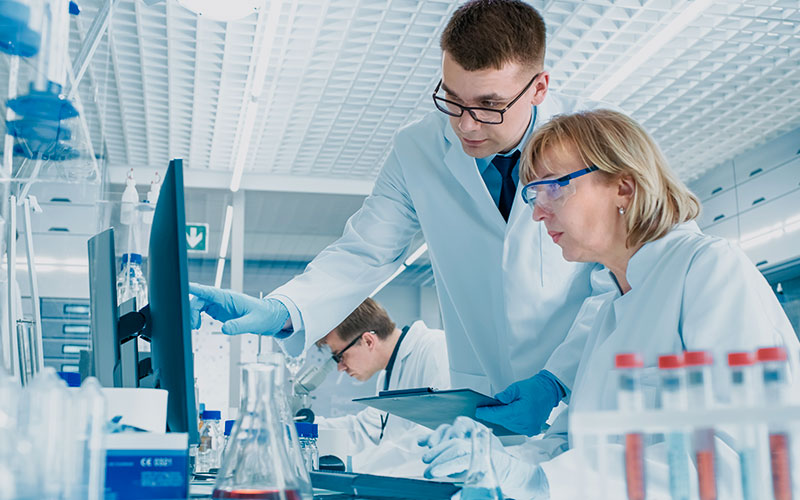
Product sampling method and retention management
We explain what to consider when designing and implementing an effective GMP-compliant product sampling method


The product sampling method is a critical step in drug analysis and determination of drug quality, as well as for compliance with GMP’s. The applicable regulation according to the EMA is EudraLex – Volume 4 – Good Manufacturing Practice guidelines (section 6.11 and Annex 8).
This method is used to select a proportion of the product – representative of the characteristics of the entire batch – to determine the quality of the drug.
The objective of using a product sampling method is to verify the quality of the drugs and their components, before, during and after the production process. However, in order for the drugs to have a guaranteed level of quality, and for the product sampling method to be effective, it must be scientifically supported, documented, and prove beyond doubt that the sample is representative, homogeneous, and does not lead to biased and incorrect conclusions.
Key aspects of a product sampling method
An inadequate product sampling method can result in biased and misleading information.
It is essential that it is very clear which samples are to be taken and analyzed when the sample is to be taken, who will sample, how it is to be done, in what quantities and how to interpret the result of the analysis.
The quantities to be taken will be established on a statistical basis to determine the level of confidence and may be moved from normal sampling to more comprehensive sampling depending on whether it is a new supplier or commodity, whether there has been any previous deviation, or whether it is deemed appropriate.
Among others, the following aspects should be verified to ensure the confidence of the regulators in the method of sampling the product:
- All materials and products must be sampled, using approved procedures and by highly qualified quality control personnel. Ideally, the sample should be examined shortly after it is collected.
- Samples should be representatives of the batch of material from which they were removed according to written and approved procedures.
- Sampling should be done in a manner that avoids the occurrence of contamination or other adverse effects on the quality of the product sampled and also avoids mixing of the material being analyzed.
- All equipment used in sampling and contacting materials should be clean and, if necessary, sterilized and stored separately from other laboratory equipment. To ensure that the cleaning method is unambiguous, the cleaning procedure should be detailed after it has been validated.
- After sampling, the containers used for sample selection should be identified and carefully closed.
- Each package containing a sample must contain the following information: Name of the product sampled, lot number, number of the container sampled, sample number, the signature of the person who collected the sample and date on which the sample was taken.
- It is possible to sample only a part of the volumes of raw materials and packaging materials when a supplier certification procedure has been established to ensure that it has not been mislabeled.
- Sampling procedures should be valid for both liquids and solids.
- Algunos materiales son sensibles al oxígeno. El muestreo de estos elementos debe hacerse en un entorno en el que la muestra no se exponga en ningún momento al oxígeno.
- Some materials are sensitive to oxygen. These should be sampled in an environment where the sample is not exposed to oxygen at any time.
- The people involved in the sampling process must be trained in the sampling procedure.
- If any abnormality is evident in the containers, the sample collector must notify and document it.
- Material left over from the sampling process must be discarded. It can never be returned to its place of origin.
- The sampling record must clearly express the purpose of the activity, which may be to perform routine testing to meet regulatory inquiries, conduct development studies, etc.
Finally, when determining the sample quantities, it is important to also define the retention samples, according to the established parameters.
Product sampling method – retention samples
Once a sample has been taken, a part of it – retention samples – must be kept for analysis in case of any claim by the client, for example, or at the request of the authorities.
Retention samples will have to be kept in a specific area, for a certain time as the case may be, following the following guidelines:
- Samples retained from each batch of the finished product must be kept for at least 1 year after expiration except for large volume parenteral solutions which must be kept for at least 30 days after expiration.
- Finished products should be kept in their final containers and stored under recommended conditions.
- If the product is in large containers, the samples can be kept in smaller containers with the same characteristics and stored under the recommended conditions.
- Samples of active substances must be kept for at least one year after the expiration of the shelf life of the final products to which they have given rise.
- Samples of other raw materials (excipients), except solvents, gases, and water, must be retained for at least 2 years after their respective shelf life.
- Keep a record of their retention samples available in the storage area.
The quantities of samples of retained materials and products should be sufficient to allow at least two complete analyses to be carried out.
The standard operating procedures, relating to sampling, should provide the following information:
- Method and plan for sampling.
- Calibration used.
- Precautions to be taken to avoid contamination of the material of any compromise in its quality.
- The amount of sample to be removed.
- Instructions as to the requirements of any subdivision of the sample
- The type of packaging to be used for edge conditioning, labeling and whether the sampling procedure will be carried out under aseptic conditions or not.
- Specific precautions to be taken, in particular with regard to the sampling of sterile or harmful materials.
Regulatory agencies pay particular attention to the method of product sampling used in the laboratory, as well as to the way in which retention samples are taken. After all, retention samples are the only evidence of product quality, and the only tool available for troubleshooting once the product has been distributed.








